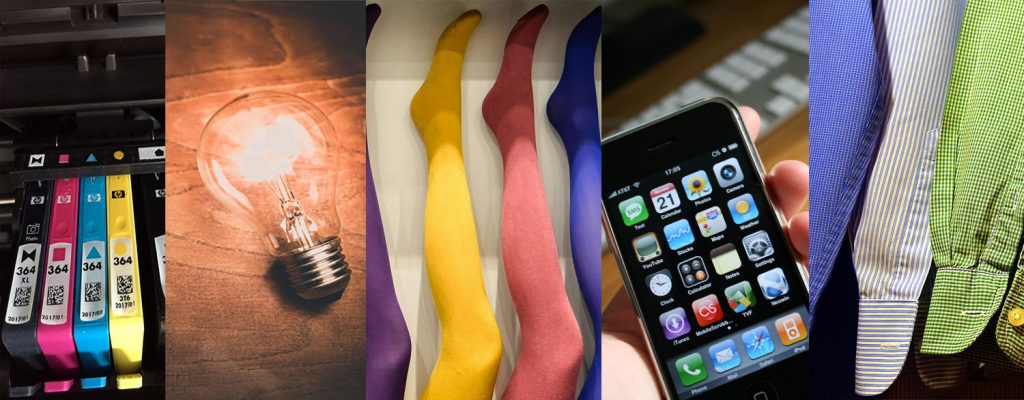
Your iPhone is literally designed to break…and it’s not just your iPhone
We throw too much away. That’s pretty much undisputed. But however good you think you are, and however much you recycle, there are products we all use pretty much every day that contribute to the amount of waste in our economy – and there’s not that much we can do about it.
‘Planned obsolescence’ is the idea that manufacturers purposefully make a product that will break in a few years, so you’ll have to buy another one. It keeps sales high, factories running, and people in jobs.
Making products with a shorter lifespan was actively encouraged in the 1930s to help dig America out of the Great Depression. Even in our lifetimes, a standard government response to the recession of 2007/8 was to make people *buy* more, to stimulate production.
So it’s definitely a thing, and you could argue it has its merits. But it’s also expensive, and wasteful, and is pushing a consumerist agenda that keeps us buying and throwing things away.
Could be another way? Perhaps – one idea would be an economy where we spend more money on things that last longer, fix them when they break, and recycle them to create more things that last longer. That’s known as a circular economy.
Right now, that's definitely not what we've got. Manufacturers rarely admit to planned obsolescence, but here are few the things we all use that we can pretty safely say have been designed to last less long than we might have thought...
Your iPhone
Smartphones, laptops, MP3 players (remember them?); consumer tech only really lasts a couple of years. Apple (which is pretty consistently accused of it) has been denying the idea that this is on purpose pretty fiercely. They insist that the reason people keep buying new products isn’t because their old one’s useless, but because the new one is so much better.
Consumers, unsurprisingly, aren’t too keen on spending their cash on purposefully shoddy goods. But although some of us persist cracked screens and external battery packs, eventually the software available will go out of date, and your phone company will push a brand new model on you.
Globally only 12% (pdf) of smartphone upgrades involve older devices being sold or traded for the new one. This means ecologically damaging devices end up sat in your drawer ( and eventually in landfill).
Your Nylon tights
Hold onto your hats, conspiracy theorists, we’ve got a big one for you: Nylon tights don’t actually need to ladder. The story goes that in the 1940s when an inventor called Dupont came up with Nylon tights, teams of scientists were sent back to the lab to work out a way of making them less durable. By making tights fragile and easy to rip, we’d buy more of them.
This is hard to actually find any proof of online (although there is a lot of outrage about it) but one thing is definitely true – Nylon is a polymer, or plastic, which won’t break down in landfill. As long as the fact they rip all the damn time keeps us buying new ones, there’s very little incentive for manufacturers to try and address that.
Your printer cartridges
In 2014, France became one of the is only countries to issue a law designed to protect consumers against planned obsolescence – manufacturers have to tell consumers how long their products are going to last. Four printer manufacturers are now in the middle of a lawsuit which claims that they falsely tell consumers their printer is out of ink.
It’s a fairly accepted fact that printer companies make their money from ink, not the printers themselves (it’s often cheaper just to rebuy a printer than it is to buy ink for it) and printer manufacturers have also been accused of changing the shape and size of the cartridge purposefully.
And – if you think about it – there’s no actual reason why we couldn’t just buy in in bottles and pour it into the cartridge ourselves.
Your lightbulb
This is another favourite of conspiracy theorists, and (quite excitingly) at its center is a old-school cartel – not a drug cartel, but a lightbulb cartel. The Phoebus cartel was made up of a group of technology companies in the 1920s and 30s that joined together to control the manufacture and sale of lightbulbs, and artificially limit the length of time a light bulb can last, to make people buy more.
Fast forward to 2017: according to an article in the New Yorker, there’s a lightbulb in a fire station in California which has been burning for the past 115 years. The bulb was manufactured sometime in the early 1900s, and has been on continuously ever since. If you plugged in and switched on an equivalent ‘incandescent’ bulb from a drug store today, it would only last a couple months of continuous use.
Your clothes
‘Fast fashion’ is a new phenomenon. Your gran would have had the same coat for thirty-odd years (with the same pack of mints in the pocket) whereas yours looks old after barely a winter. High street stores compete against each other to churn out collection after collection, encouraging consumers to replace their new jumper with a newer one.
But according to some experts they also purposefully make them to break – buttons aren’t sewn on properly, fibres are used in the wrong combinations so they stretch and shrink in funny ways. According to a UK government report we buy 2 million items of clothing a year, and throw away 1 million.
And, surprise surprise – fast fashion isn’t exactly known for its use of natural biodegradable material like cotton, wool or silk. Instead, your clothes are likely to be made of polyester or nylon, each containing tiny plastic ‘microfibers’ which find their way into the ocean – and the belly of a fish.



